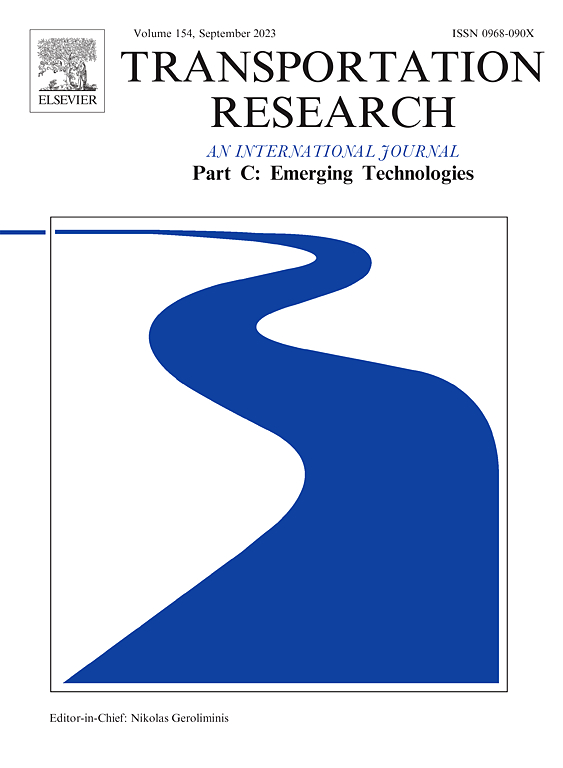Physics informed deep generative model for vehicle trajectory reconstruction at arterial intersections in connected vehicle environment
IF 7.6
1区 工程技术
Q1 TRANSPORTATION SCIENCE & TECHNOLOGY
Transportation Research Part C-Emerging Technologies
Pub Date : 2025-02-01
DOI:10.1016/j.trc.2024.104985
引用次数: 0
Abstract
Inferring the complete traffic flow time–space diagram using vehicle trajectories provides a holistic perspective of traffic dynamics at intersections to traffic managers. However, obtaining all vehicle trajectories on the road is infeasible. To this end, a novel framework that combines the conditional deep generative model and physics-based car-following model is proposed to reconstruct all vehicle trajectories from sparsely available connected vehicle (CV) trajectories at the intersection. The proposed framework has two novel components: Arrival Generative Adversarial Network (Arrival-GAN) and Trajectory-GAN. The Arrival-GAN reproduces stochastic vehicle arrival patterns by considering the interaction between adjacent intersections (e.g., signal control scheme) and the interaction between multiple vehicles from historical vehicle trajectories, circumventing the conventionally adopted unrealistic assumptions of uniform vehicle arrivals. The Trajectory-GAN model takes the baseline trajectory deduced by the physics-based car-following model as prior information and refines it by dynamically adapting driving behavior in response to the varying traffic conditions in a data-driven manner. This hybrid approach leverages the advantages of data-driven (i.e., flexibility) and theory-driven approaches (i.e., interpretability) complementarily. The proposed framework outperforms conventional benchmark models in the simulated arterial network and the real-world datasets, reconstructing a complete time–space diagram at intersections with markedly enhanced accuracy, particularly in low-traffic-density scenarios. This study showcases the potential of utilizing CV data and physics-informed deep learning to improve our understanding of traffic dynamics, empowering traffic managers with novel insights for efficient intersection management.
求助全文
约1分钟内获得全文
求助全文
来源期刊
CiteScore
15.80
自引率
12.00%
发文量
332
审稿时长
64 days
期刊介绍:
Transportation Research: Part C (TR_C) is dedicated to showcasing high-quality, scholarly research that delves into the development, applications, and implications of transportation systems and emerging technologies. Our focus lies not solely on individual technologies, but rather on their broader implications for the planning, design, operation, control, maintenance, and rehabilitation of transportation systems, services, and components. In essence, the intellectual core of the journal revolves around the transportation aspect rather than the technology itself. We actively encourage the integration of quantitative methods from diverse fields such as operations research, control systems, complex networks, computer science, and artificial intelligence. Join us in exploring the intersection of transportation systems and emerging technologies to drive innovation and progress in the field.

 求助内容:
求助内容: 应助结果提醒方式:
应助结果提醒方式:


